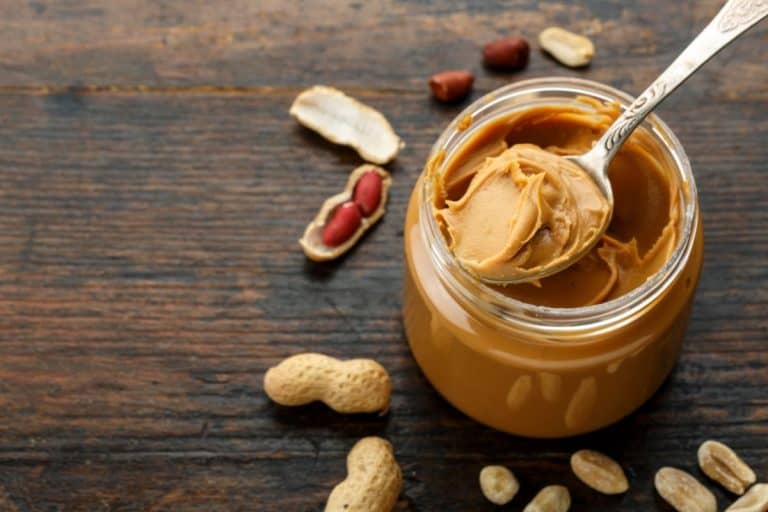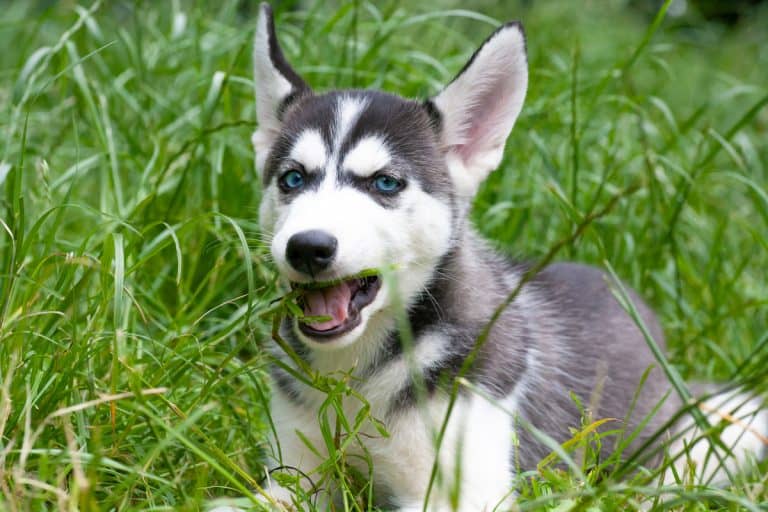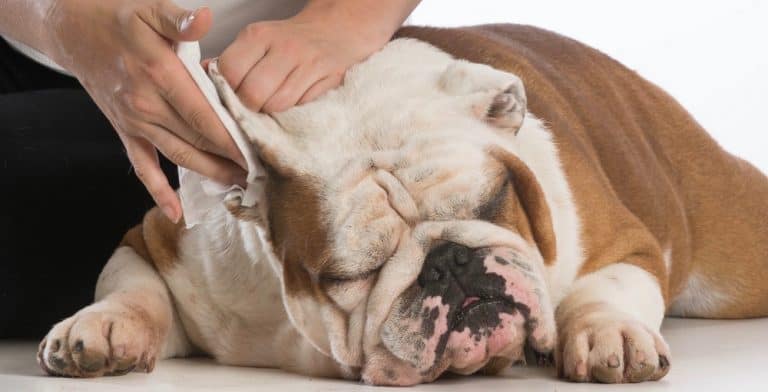Pitbull Colors: 18 Coat Colors & Patterns
The negative reputation that follows around Pitbulls is known throughout the world.
Unfortunately, many locations have banned this breed, not realizing that a Pitbull can be a lot of different things and that there are many different Pitbull colors. In turn, the mere appearance of a dog can have it be marked as a Pitbull.
In truth, Pitbulls can come in up to 18 different colors, spanning from blue and red to bronze and merle.
People might try to mark the appearance of a Pitbull based on fur color, but this assessment is clearly faulty. This breed is not well-defined by its colors as there are so many.
Defining A Pitbull Breed
While the American Pitbull Terrier is the known breed of a Pitbull, several other breeds are also confused for Pitbulls and therefore lumped into the Pitbull category.
In addition to the American Pitbull Terrier, the American Staffordshire Terrier, the Staffordshire Bull Terrier, and the American Bulldogs are all referred to as Pitbulls, even though the definition is not correct.
The American Pitbull Terrier is not a recognized breed by the American Kennel Club, but it is recognized by other kennels, including the Canadian Kennel Club, the United Kennel Club, and the American Dog Breeders Association.
Most colors of Pitbulls are recognized by these clubs as well, with the exception of albinism and merle. Albinism is a genetic condition where the dog lacks pigment in his eyes, fur, and skin. Merle, on the other hand, is a combination of different colors, resulting in patches or spots.
Does Dog Coat Color Really Matter?
While we might look at our dog’s coat and just think about how pretty they are, the color of a dog’s coat does matter. The color of the coat can affect many different factors, including the dog’s sense of smell, their ability to stay cool, and their ability to camouflage.
In general, the paler coat of dogs, the less sense of smell that they have. Albino dogs, for example, have a terrible sense of smell, which makes them more susceptible to predators and can easily shorten their lifespan. This is called olfactory ability.
At the same time, dogs with paler coats will have an easier time reflecting sunlight, therefore naturally staying cooler in the heat. Darker furs will absorb the heat and require more shade and water.
In the wild, the more merle-like coats have an easier time camouflaging in their environment, increasing their longevity in the face of predators. These elements will not affect a domesticated dog as much.
18 Pitbull Coat Colors
Blue Pitbull Color
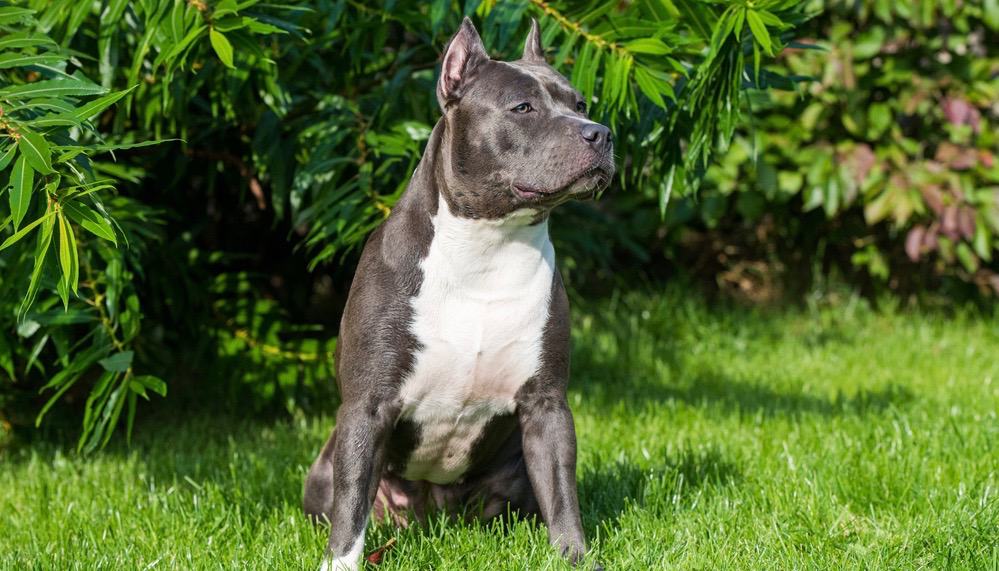
Also known as the Blue Nose Pitbull, the Blue Pitbull is not really a blue color. Instead, this dog is a light grey color with a light grey nose.
They will sometimes have white face markings in between their eyes and down their muzzle. They normally have white chests and will have other white markings as well.
This is a recessive color, so both parents need to have the gene to produce Blue Pitbull puppies.
Black Pitbull Color
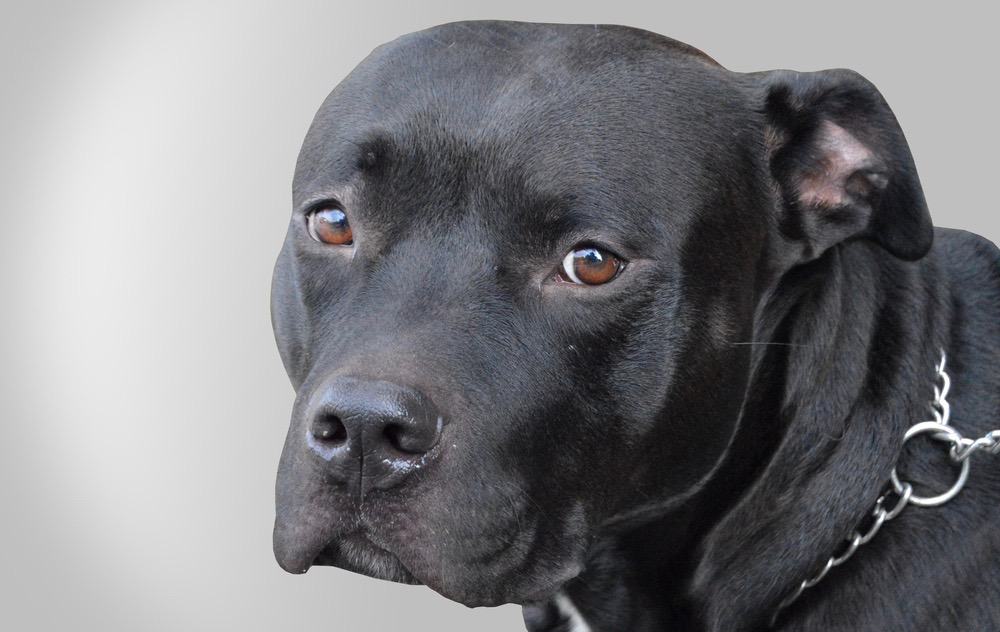
The American Pitbull Terrier and the American Staffordshire Terrier both can have black puppies. They can be solid black without any other markings or they can have white patches on their fur.
The white is most often found along their necks and chests and might even cover their feet as well. They have a black nose as well. This is one of the most common colors of the Pitbull breeds because it is not a recessive trait.
Black Brindle Pitbull
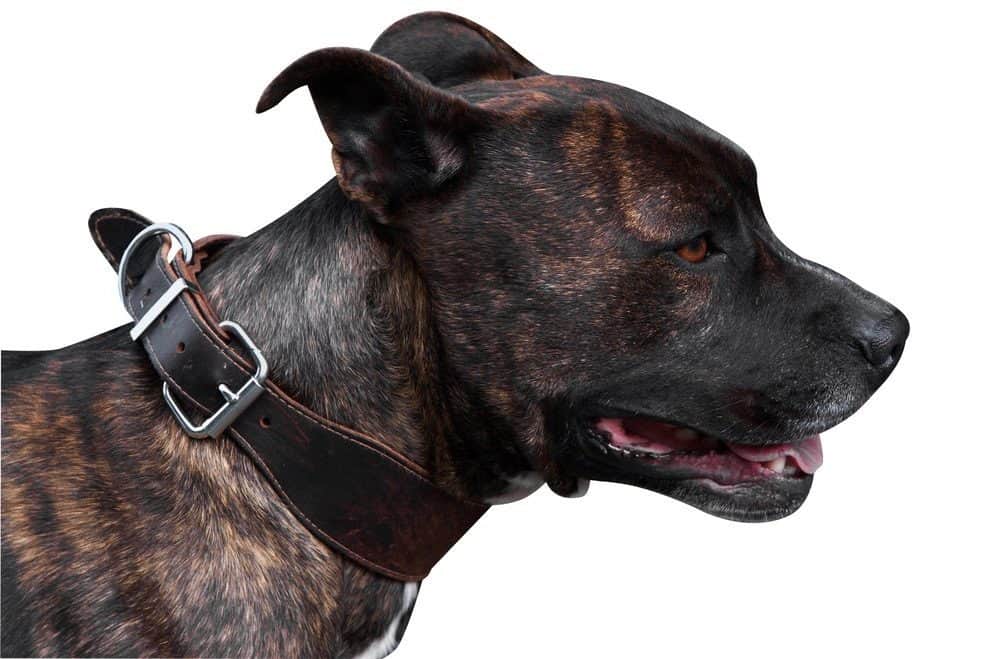
Looking at a Black Brindle Pitbull, they still have the black coat, but they also have other colors involved.
They will have a light-colored base coat with black colors on top, giving it the common tiger stripe appearance that we see with brindle coats. The Black Brindle pattern is usually near their heads or rumps.
Red Pitbull Color

Also known as a Red Nose Pitbull, the Red Pitbull, just like the Blue Pitbull, is not actually red but is closer to the color that we refer to when we say a person has red hair.
Their coats are a copper or reddish-brown color. They also have a nose that will match the color of their fur. They do have redder lips and nails as well and will often have white chests and white along their muzzle.
Red Brindle Pitbull
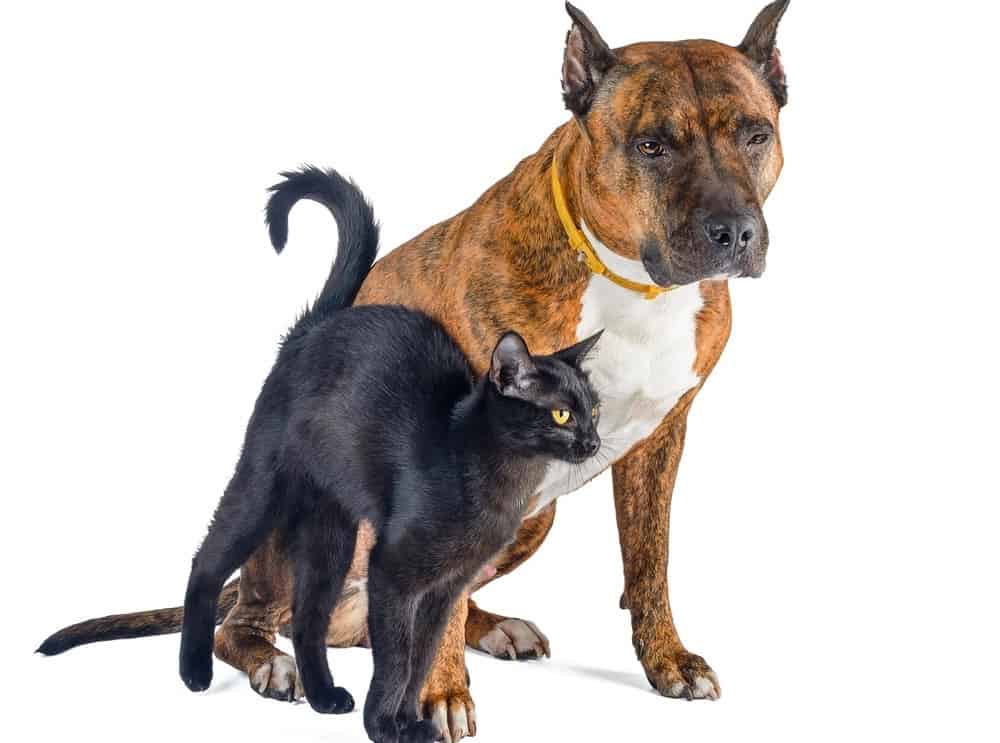
A Red Brindle Pitbull will have a light base coat with red fur along the top.
The paler undercoat is usually a white or light cream color while the darker fur will be shades of red. The darker fur will make striped patterns along the lighter fur as well.
White Pitbull Color
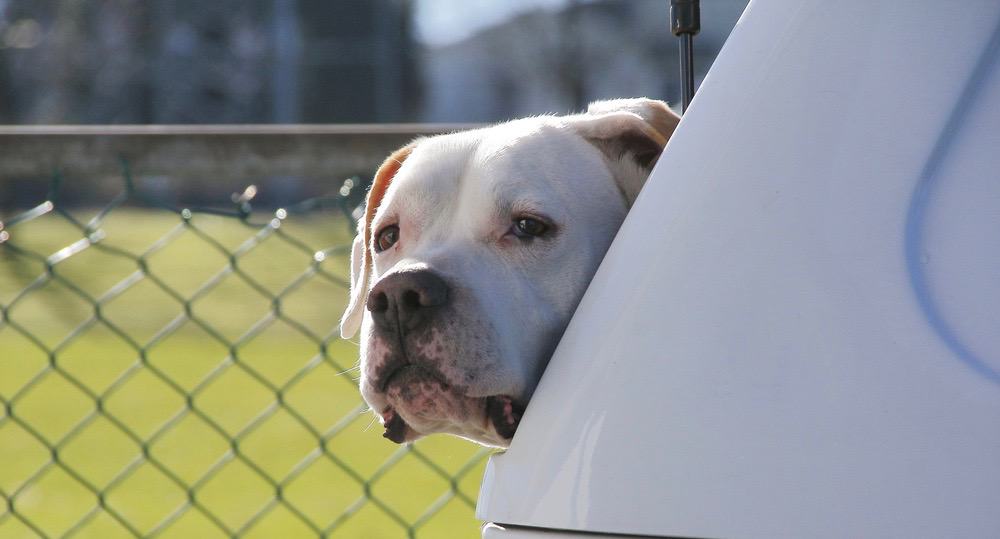
White Pitbulls are not a common coloring that you will see in Pitbulls. Most of the time, they are all white without any other colors of markings on them.
They also have the standard black nose, but their eyes can be brown, black, red, or even have more than one color.
This uncommon color is in high demand, but it is also associated with the negative reputation that Pitbulls have, so proceed with caution if this is what you are looking for.
Tricolor Pitbull

While most Pitbulls have one or two colors at most, there recently has been a Tricolor Pitbull introduced to the fold.
The combination can be a mix of white, black, blue, red, chocolate, and fawn. The colors are usually on their chests, paws, legs, nose, and face. You might not have seen this combination yet.
Grey Pitbull
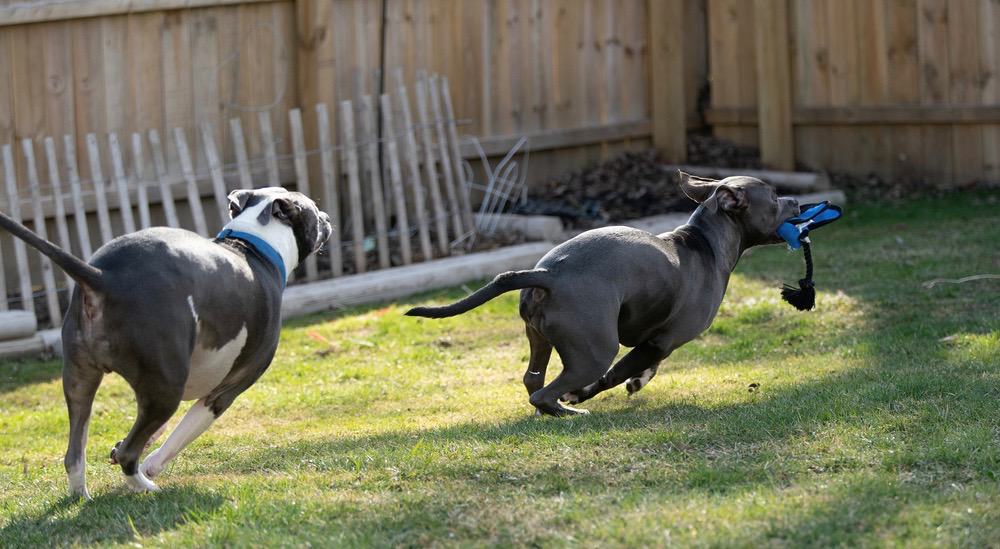
Grey Pitbulls are often confused with Blue Pitbulls. They are both grey, so it is not a bizarre confusion.
The Grey Pitbulls are usually darker than the Blue Pitbulls and will often come about when a breeder is trying to achieve the Blue color and cross different Pitbull colors.
Brown Pitbull
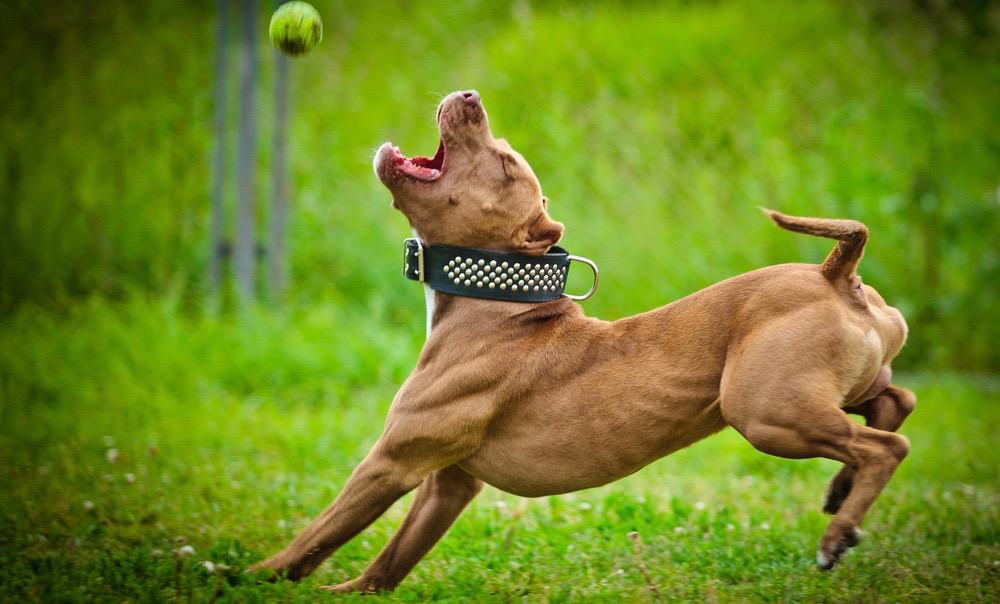
Brown Pitbulls can easily be mistaken for Red Pitbulls, but they do have color differences. While the Red Pitbull is more like a redhead, the Brown Pitbull is more like a brunette.
Their fur does not have the same reddish quality to it as Red Pitbulls but do often have white on them as well.
Brindle Pitbull
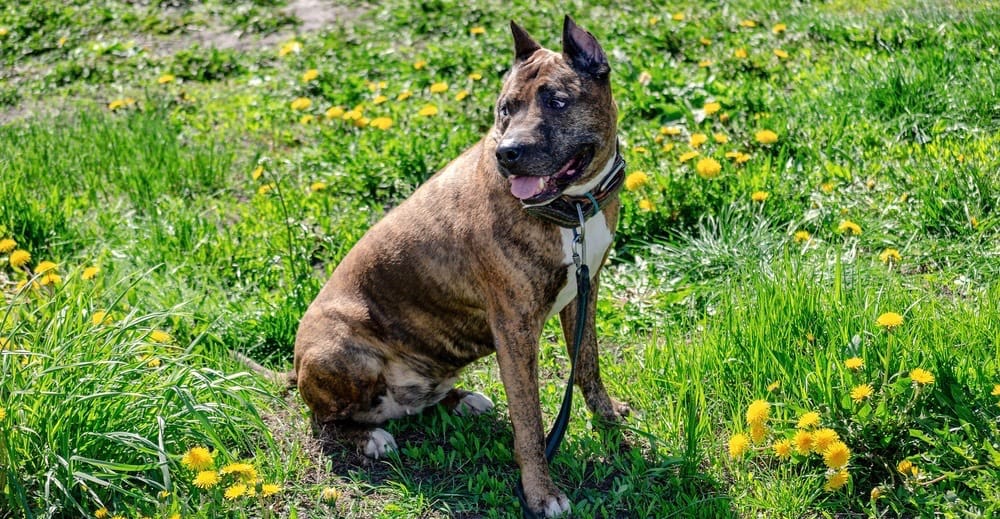
A standard Brindle Pitbull is a Pitbull that has a base color of brown with lighter brown and black stripes running through it.
They usually have white patches along their chest muzzle, and even their feet as well. This is one of the most popular Pitbull colors out there.
Seal Pitbull
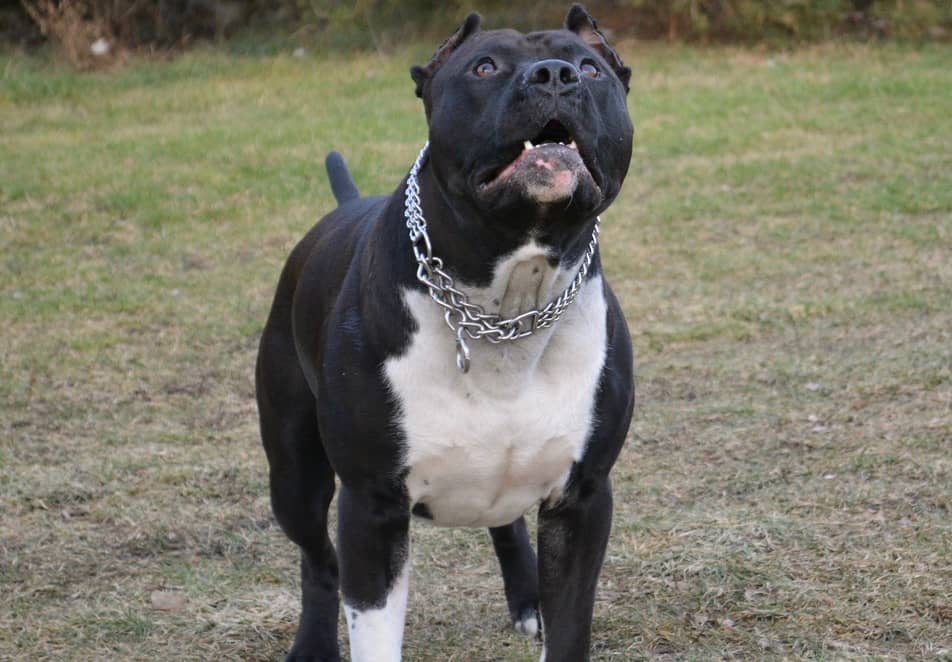
A Seal Pitbull is not common at all and it is difficult to create. They always have a black nose, but their fur colors can vary.
It is usually a combination of black, chocolate, blue, or lilac colorings that do not have a patchy element or a brindle effect to them.
Fawn Pitbull
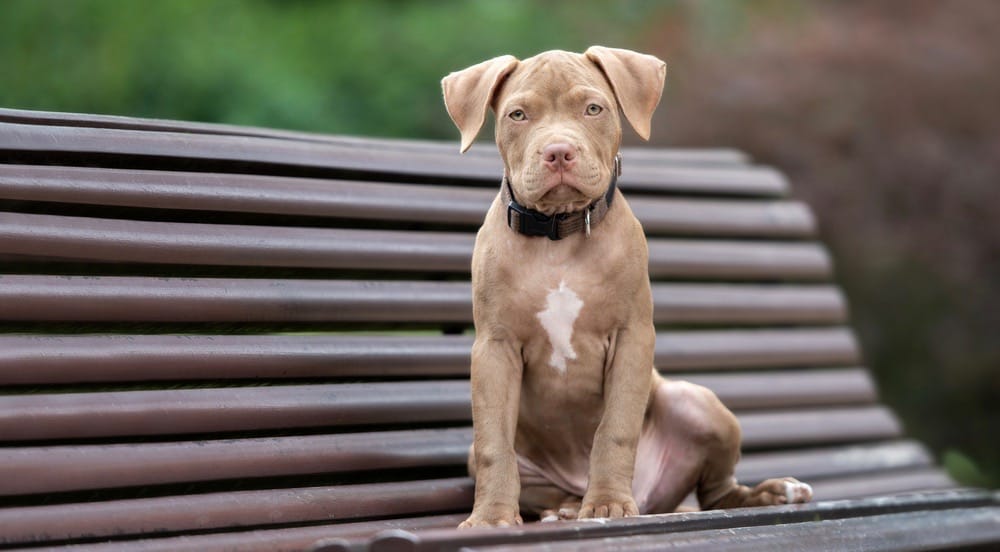
Fawn Pitbulls are almost diluted in their color. They are a very pale tan color, verging on yellow.
They typically have tan or pink noses as well and will often have the white neck and chest that we see so often across the Pitbull breed. They also usually have white paws.
Blue Fawn Pitbull
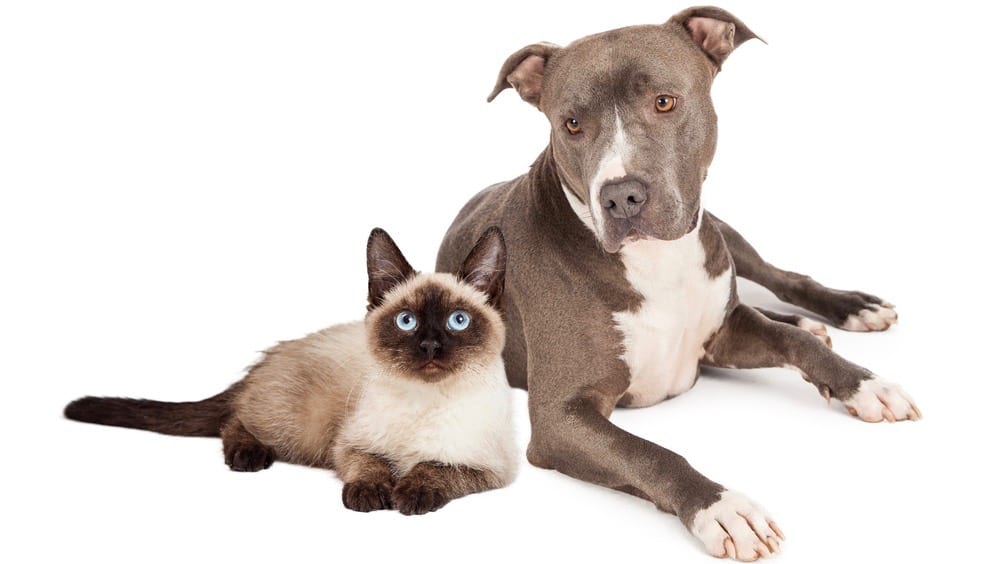
The Blue Fawn Pitbull color is a variation of the Blue Pitbull. Like the standard Fawn Pitbull, it is almost as if their color has been washed out or diluted. They usually have a red or blue nose and will have white paws as well.
Brown And Tan Pitbull
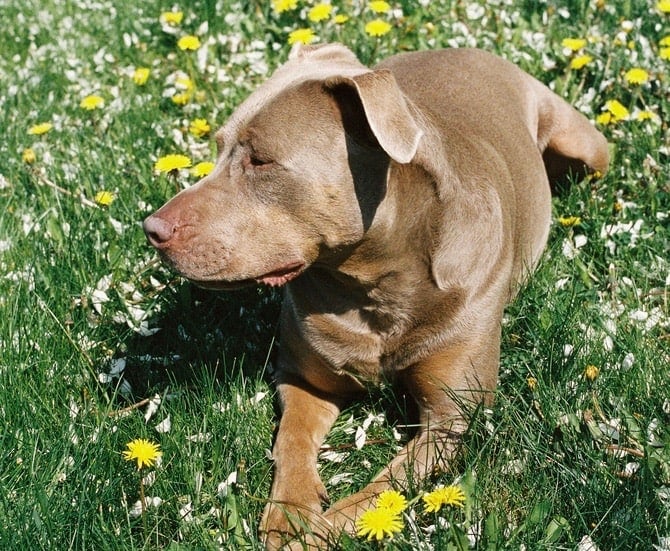
Black and Tan Pitbulls have the same coloring as Rottweilers and can easily be confused as a result. They have black and tan patches all over their bodies and usually will have a white chest.
This is more common in American Pitbull Terriers and is a result of a recessive gene.
Liver Pitbull

Liver Pitbulls are also referred to as Chocolate Pitbulls. They are a rich brown color, much like a Chocolate Lab.
They have brown fur, brown eyes, and a matching brown nose. Sometimes they will be all brown, but can also have the white chest that is a common theme among Pitbulls.
Bronze Pitbull
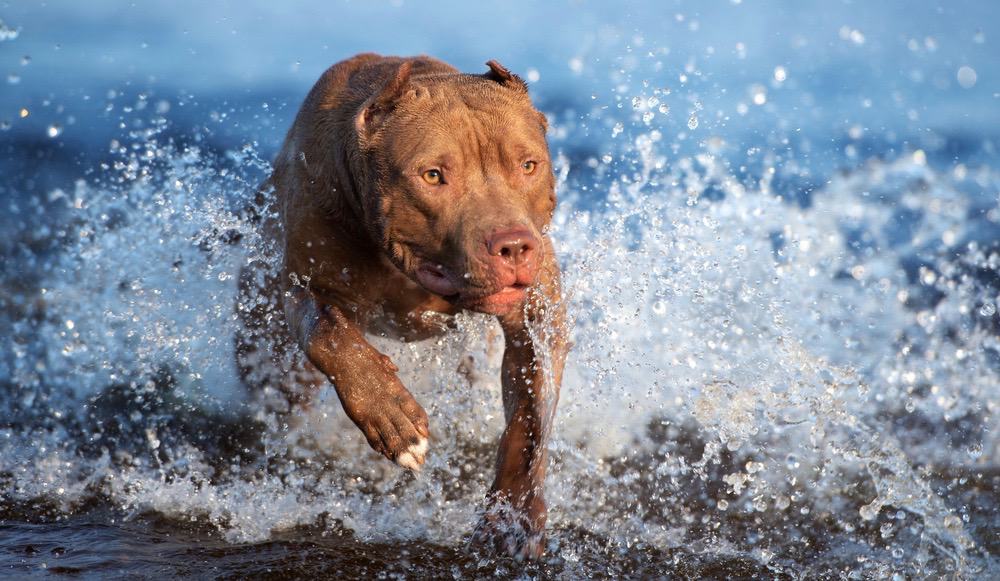
The Bronze Pitbull is a rare color variant for the Pitbull breeds.
The colors are a mixture of yellow and gold, but they have a red undertone that results in the intensified bronze result. This is a recessive combination, which is why you will not come across it very much.
Merle Pitbull
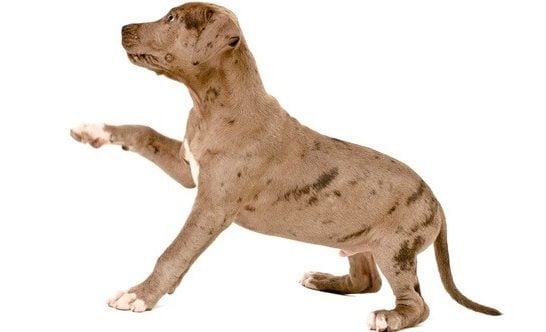
The Merle Pitbull, as we described above, is a combination of many different colors. The breed can even have one eye as one color and the other eye as a different color.
Dogs this color, often appear to have spots, unlike the patches seen in other colors or the stripes found with Brindles.
Blue Brindle Pitbull
A Blue Brindle Pitbull has much of the same colors that we saw with the Blue Pitbull. The difference is that they have a brindle stripe, which is a lot like a tiger stripe pattern to their fur. They still have the grey nose that a Blue Pitbull has.
How Do Pitbull Color Genetics Work?
Since there are so many different Pitbull colors out there, it’s a common question to ask how the color genetics work.
To begin with, naturally, some colors are dominant and therefore more common than others, while the less common colors come from recessive genes, making them only appear if two Pitbull parents both carry the recessive gene.
While there are many different genes that contribute to the appearance of a Pitbull, there are only eight loci that affect the color.
Agouti (A) Locus: The A locus is in charge of producing the protein to release melanin in the dog’s fur. This contains the most dominant traits, including the red gene as well as browns.
Extension (E) Locus: The extension locus includes four alleles in charge of black pigmentation as well as blue. The recessive trait in locus will give you lightly colored fawn Pitbulls as well.
Dominant Black (K) Locus: This controls the most common Pitbull colors, which are black, fawn, and brindle.
Brown (B) Locus: This is linked directly to browns, chocolates, and liver colors.
Dilute (D) Locus: This locus will dilute the solid colors, turning black into gray or fawn into sable.
Merle (M) Locus: The merle locus will dilute the natural black pigmentation, giving the dog’s fur an irregular and patchy combination of colors.
Harlequin (H) Locus: This locus appears with white Pitbulls, pulling in black patches, giving the dog a harlequin appearance.
Spotting (S) Locus: Last, but definitely not least, we have the spotting locus. This locus creates coat patterns on white or multi-colored dogs. It also is the same gene that creates the light blue eyes that are so striking and is the cause of high color deletion, changing the overall appearance of the coat.
What Is The Most Common Pitbull Color?
Naturally, as we listed so many different Pitbull colors, you might be wondering what the most common Pitbull color is. The answer is not incredibly straightforward, but we can lower down the amount of colors to give you the colors that we see most often.
Remember that there are several different breeds that are lumped into the Pitbull umbrella, making the possibility of choosing just one common color impossible.
What is also confusing is that the kennel clubs that accept the Pitbull breed often don’t limit the breed to just one color as an accepted color. Instead, they can have all of the combinations of accepted color, minus the Merle coloring.
That said, we have found that the Red Nose Pitbull is the most common of the Pitbull colors. They are easy to identify and easy to find.
Second to Red, we have found that the Black Pitbull is also a common color to come across, even if it is not the color that is most commonly thought of when it comes to the breed’s reputation.
Rare Pitbull Colors
While there are a few different recessive colors that are less common with Pitbulls, the least common color of all is the Merle coloring.
We have already mentioned this above, but the dogs that are this color usually have a darker base color and then become spotted with various colors. This color is the only color that is not accepted by the United Kennel Club because it is assumed that it is a mis breeding of color that leads to it.
In addition to the Merle Pitbulls, the Blue Nose Pitbulls are also rare, though they are highly sought after and many Pitbulls are bred in an attempt to achieve this color.
Finally, the Bronze color is also rare, though it is not as sought after. It seems to be a result of unintentional breeding between a Red and a Fawn Pitbull, leaving the dog a Bronze color.
The Relationship Between Coat Color And Pitbull Health & Behaviour
There has been a lot of conversation about whether the coat of a Pitbull can actually determine whether the dog will be aggressive or not.
Even veterinarians get into the conversation. It has been argued by breeders and veterinarians alike that Blue Nose Pitbulls are more prone to health and behavior problems.
Health-wise, this could be true. Blue is a recessive gene, putting the dogs at a higher risk of some of the health issues that Pitbulls suffer. Behaviour-wise, this cannot be substantiated.
Some health issues that are associated with coat color include:
Deafness: This occurs a lot with White and Merle Pitbulls.
Blindness: This also comes from the recessive gene found in both White and Merle Pitbulls.
Sun Sensitivity: Naturally, White Pitbulls are more sensitive to the sun because their coat does not provide a lot of protection, but they do have a tendency to stay cooler in the heat.
Skin Cancer: Both Merle and White Pitbulls do not have a lot of skin pigment, putting them at a higher risk for skin cancer.
Otitis Externa: This condition is found in Liver Pitbulls. It is an inflammation of the ear canal which can lead to deafness if not treated.
Skin Disease: This condition also affects primarily Liver or Chocolate Pitbulls. It is a skin condition referred to as Wet Eczema.
In conclusion, the coat is really only a part of the dog and the way that he behaves has a lot more to do with how the dog is treated rather than the colors he was born with.
Dogs of certain colors are treated as if they are automatically aggressive, resulting in them becoming what they are assumed to be like. No one is born with a chip on his shoulder and how we treat them definitely affects how he will act.
Black Pitbull Color & Black Dog Syndrome (BDS)
Another thing related to Pitbull color that you might not have thought about has to do with Black Pitbulls. A situation that arises too often with Black Pitbulls is called Black Dog Syndrome.
This condition happens when black dogs are not adopted because of their dark fur. When a black dog is put up for adoption next to a dog with lighter fur, the lighter dog is far more likely to be adopted quickly than the black dog is.
In addition, black dogs are often euthanized at a much higher rate than Pitbulls of other colors, because they are not adopted out as quickly.
Black dogs simply are more difficult to be homed and once a dog has stayed too long in a kill shelter, the shelter will do away with it.
The prejudice against black dogs is thought to have a few different sources. There is dark mythology that surrounds the color of dogs that we see reflected in popular culture.
In addition, in a study by Penn State, they found that people, in general, find images of black dogs to be a lot scarier than images of other dogs. They are considered less friendly, more intimidating, and therefore less adoptable in general.
In a more practical sense, it is harder to capture a black dog on film so when the photos of black dogs go up on shelter websites, the images are not going to capture the joy the dog has. It is up to you to discover that.
Pitbull Coat Color vs Price
Even though there is not a personality difference between the different colors of Pitbull, some Pitbull colors are more sought after than others, so different colors will have different prices to work with. Here is a breakdown of some of the more commonly sought-after colors and their cost.
Blue Pitbull: This color of Pitbull is uncommon, but still strongly desired. They can run between $1,000 and $3,000 for a puppy. The high cost is due to the color rarity.
Black Pitbull: Black Pitbulls are more common than the Blue Pitbulls are, but their cost range can be extreme. In general, their puppies run between $800 and $1,000, but the dogs bred from the highest pedigree can go up to $20,000.
Brindle Pitbull: Another one of the more common colorings that are associated with Pitbulls is the Brindle Pitbull. Because of their commonality, they are among the cheapest Pitbull puppies, costing between $500 and $700 on average.
White Pitbull: Since White Pitbulls are so very rare, it might come as a surprise that they are not as expensive to purchase. White Pitbulls do have more health problems than other colors. Their cost runs between $300 and $500 on average.
Red Pitbull: Red Pitbulls are one of the best-known colors of Pitbull. Even so, if you are adopting one from a breeder, you can expect to pay between $2,000 and $3,000 for a puppy.
Do Pitbulls Change Their Coat Color As They Age?
If you look through pictures of various dog breeds, you will see how much a dog’s coat can change from the time that he is a puppy to when he is an adult.
This is not applicable to every breed of dog since dogs are born with a soft puppy coat that will often be replaced by a less soft coat after a few months.
Even though Pitbulls come in a myriad of different colors, in general, the coat color that they are born with is the color that they are going to be as an adult.
The texture of their fur might change, but the color of their fur is unlikely to change. There might be some change in patches or the size of the patches as the dog ages, but the base color that your puppy has when you adopt him is likely to be the color that he gets to keep.
Pitbull Eyes And Nose Colors
Just as there are so many different coat colors for Pitbulls, they also have some variety as far as their eyes and their nose goes. They can also experience color changes in their eyes as they get older.
Most Pitbulls are born with blue eyes. The eyes will generally darken to a shade of brown or hazel within the first 6 months of the dog’s life.
Yet, there are still some Pitbulls who keep the blue color throughout their life. This is pretty, but it is not always a good thing.
The issue is that the eyes are not actually blue, but instead they lack melanin and are reflecting back color, making them appear blue. As a result, they are more prone to health conditions than brown-eyed Pitbulls are.
In addition to eyes, Pitbulls can have a variety of nose colors. Their nose color usually relates to the color of their coat. So Red Pitbulls will have a reddish nose.
Blue Pitbulls will have a bluish nose. The most common nose color for a Pitbull is black, but they do come in just about any color. Some noses even have more than one color, matching their unique coat.
Where Are Pitbulls Banned And Restricted Internationally?
Given the nasty reputation that follows Pitbulls around, it should come as no surprise that the breed is banned in several countries.
While some local municipalities might have bans on the breed, there are several countries that have put a nationwide ban on the breed in place. This includes Belgium, Denmark, Finland, France, The Netherlands, Norway, Sweden, New Zealand, Poland.
The breed was banned from these countries because of the reputation that the dog breed is aggressive and bloodthirsty. They believe that the breed should not exist at all given its darker origins.
In locations where the breed is allowed, there are often local restrictions to consider as well.
Final Words
After all of these considerations, we hope that you have learned that the color of the Pitbull does not determine the amount of love that you will get out of a Pitbull or whether your dog is easier to train than others.
Regardless of color, Pitbulls can be loving and loyal family pets.
When you are looking into adopting a Pitbull, look beyond the pup’s color and see whether the dog has the right demeanour for your family.
The color is only the appearance of your dog. It has nothing to do with how lovely your dog will wind up being.




